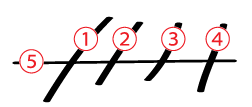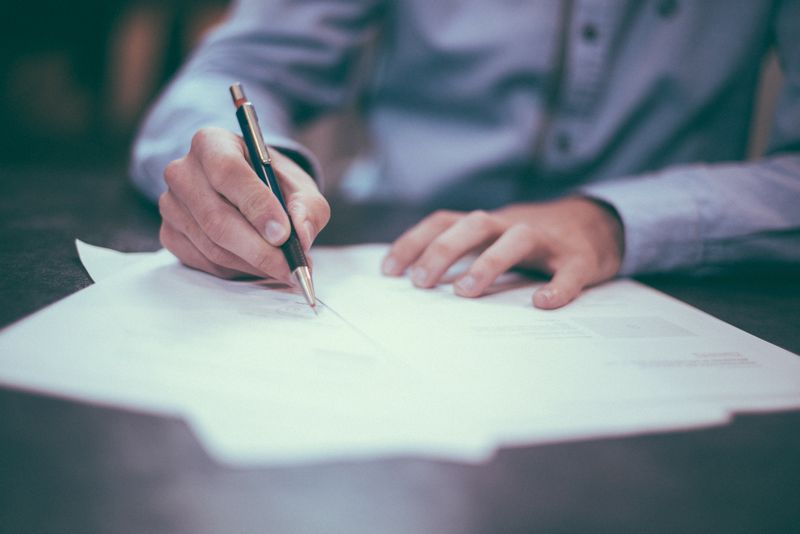
I have 2 learning methods which I recommend to you.
①Sentence Pattern Method (to know how sentences are built. )
②Read-Aloud Method (to practice sentence patterns)
If you have used Genki or any textbook, you will eventually come to the conclusion that while they get you started, you are still lacking skills in that language. So what can you do? Let’s try the Sentence Pattern approach with me!
When you find Japanese expressions that you want to acquire, I recommend that you collect several Japanese sentences (around 5 to 7) that have the common structure. Additionally, if you prepare English (or your mother tongue) translations of the sentences, that would be great.
It is good for you to understand simple formulas for sentences. After understanding and practicing these patterns,you can plug in words… and create your own sentences!
You can see an example of the following:
日本語 / にほんご / Japanese
(1)駅はどこですか。
(2)バス停はどこですか。
(3)トイレはどこですか。
(4)病院はどこですか。
(5)公園はどこですか。
(6)図書館はどこですか。
ことばと表現 / Words & Expressions
駅【えき eki】station
バス停【ばすてい basutei】bus stop
トイレ【といれ toire】toilet
病院【びょういん byouin】hospital
公園【こうえん kouen】park
図書館【としょかん tosyokan】library
英語 / えいご / English
(1)Where is the station?
(2)Where is the bus stop?
(3)Where is the toilet?
(4)Where is the hospital?
(5)Where is the park?
(6)Where is the library?
ひらがな / Hiragana
(1)えきはどこですか。
(2)ばすていはどこですか。
(3)といれはどこですか。
(4)びょういんはどこですか。
(5)こうえんはどこですか。
(6)としょかんはどこですか。
ローマ字 / Roman letters
(1) Eki wa doko desu ka.
(2) Basutei wa doko desu ka.
(3) Toire wa doko desu ka.
(4) Byouin wa doko desu ka.
(5) Kouen wa doko desu ka.
(6) Tosyokan wa doko desu ka.
After checking them out, it would not be difficult for you to find a common pattern among them. Now you can make your own sentence by switching the first noun in the sentence. That’s quite simple, isn’t it?
After learning sentence patterns, you can create a variety of sentences and not be limited to one or two patterns each time you speak or write.
Also, you can more easily correct sentences because you’ll know how sentences are built. You’ll understand the parts of a clause and how they fit together.
However, I have to admit that knowing sentence patterns is not enough. We need to practice to help set them more firmly in our memory. So, I am going to tell you about another method.
2.Read-Aloud Method
If you’re really serious about your ORAL FLUENCY, you need to get your mouth involved in every Japanese learning-related activity.
You have to memorize Japanese phrases and sentences by speaking them out loud many times over multiple days so that you wire them into your mouth.
This naturally moves sentence patterns to a subconscious level where they become permanently stored for recall and habitual use at any time.
To wire sentence patterns into your brain and mouth, I recommend that you read a group of sentences out loud, not just read them in silence, (at least) 60 times in total.
To begin with, please read a group of Japanese sentences out loud twice to remember them.
Also, don’t forget to keep track of how many times you read. This is very important!

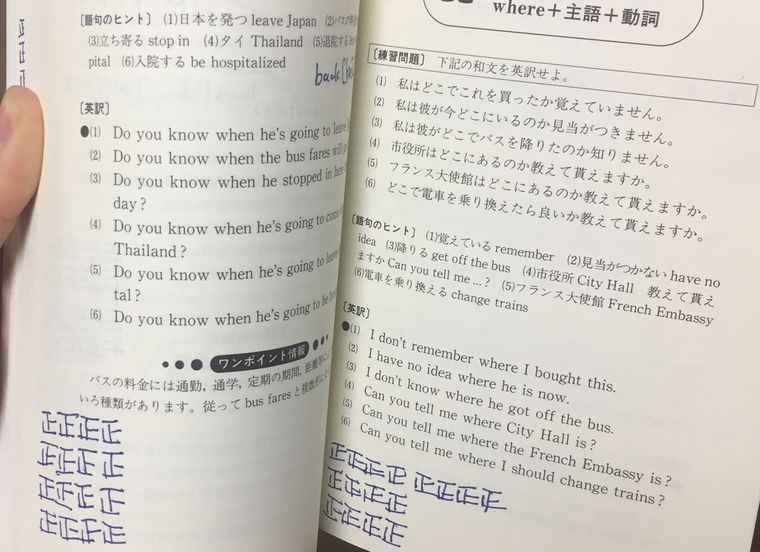
After reading Japanese sentences out loud twice, please take a look at the English sentences and check whether you can translate them into Japanese correctly or not.
This is not only a self-checking process but also an important process that helps you clarify the meaning of Japanese words, expressions, and sentence patterns in your brain.
If you can’t do it well, please don’t worry about it. Let’s read the Japanese sentences out loud twice again.
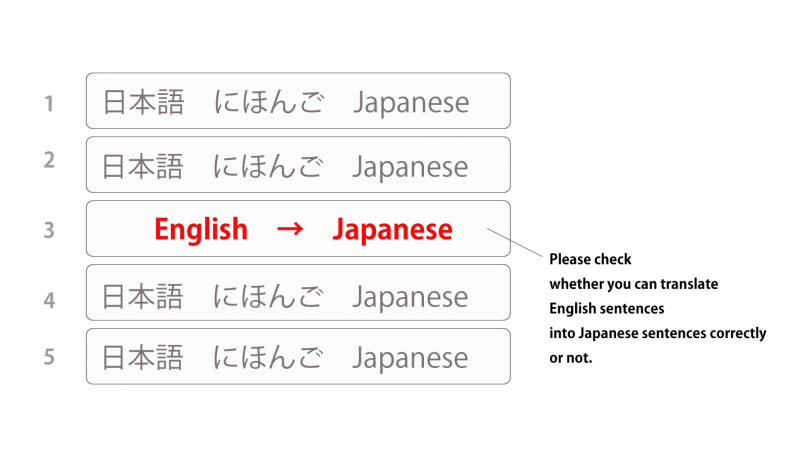
This is a basic routine of the Read-Aloud Method. I recommend that you practice this basic routine three times a day.
The second time you do the routine, you will check whether you can translate the English sentences into Japanese sentences again. I’m sure you can do better than you did the last time.
The third time, you would be more accurate than before.
So, you read a group of sentences out loud 15 times a day.
This is the basic routine I have practiced once a day (though English and Japanese are opposite in my case…)
It takes only 5 to 10 minutes a day.
I recommend that you read a group of Japanese sentences with a common structure out loud 60 times in total. So, you will basically master one sentence pattern in 4 days.
It helps you automate the process of utilizing grammar rules and sentence patterns in your brain. If you succeed in automating the use of grammar rules and sentence patterns, you can focus on what you are going to say in conversation,and it gives you more fluency in Japanese.
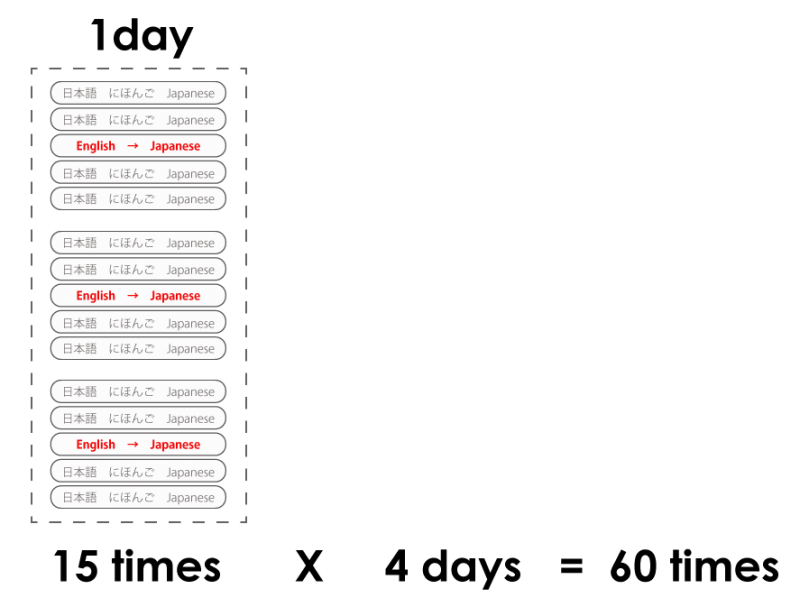
After reading them out loud over and over, you would feel that it is difficult for you to forget the sentence patterns you read out loud. In addition, when you speak to Japanese speakers, your brain would try to find opportunities to use them in actual conversations. Please allow your brain to make conversations using the sentence patterns you mastered!
I believe this method helps you boost your communication skills in Japanese!
Related links(Please read them once!):
Have You Ever Thought About Your MOUTH As a MUSCLE?
Does reading out loud cause you to remember things better?
To Remember More, Read Out Loud (to Someone)


